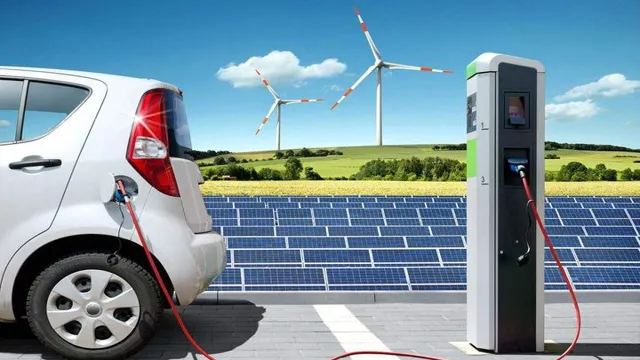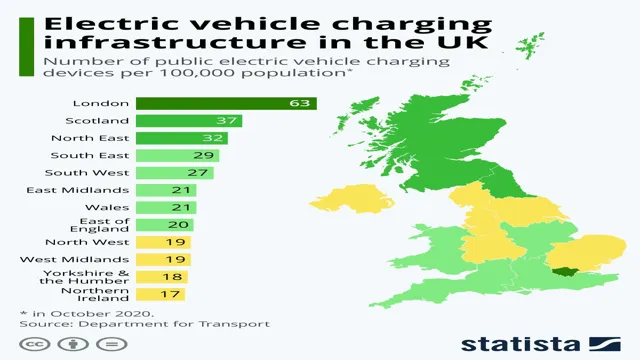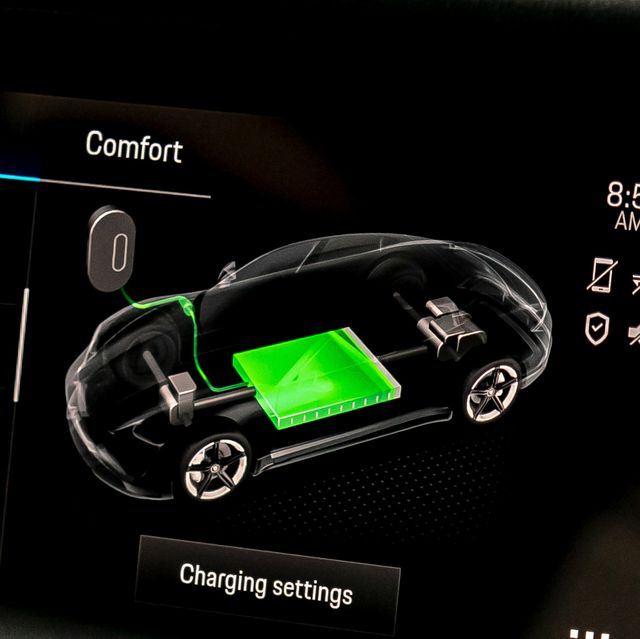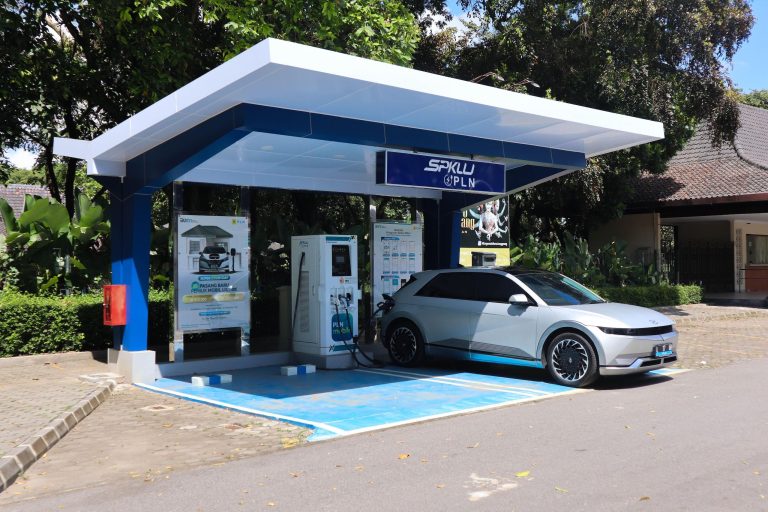Revolutionizing India’s Transportation: The Future of Electric Car Charging Infrastructure
India is experiencing a shift towards eco-friendliness and sustainability in many areas, and one of these is the adoption of electric vehicles. While this transition is necessary and exciting, it also poses new challenges that need to be addressed. One of them is developing an electric car charging infrastructure that can meet the growing demand for these vehicles.
As more individuals choose electric cars over conventional ones, a reliable and robust charging network must be in place to cater to their needs. In this blog, we will explore the current state of the electric car charging infrastructure in India and what progress has been made in recent years. We will also discuss the benefits of electric car charging infrastructure and how it can help India achieve its goal of becoming a greener and more sustainable nation.
Current State of Charging Infrastructure
Electric car charging infrastructure in India is slowly but steadily progressing. According to recent reports, there are currently around 800 public charging stations in India, with more being added each month. However, the charging infrastructure is still in its nascent stage and needs to be improved to accommodate the growing number of EVs on the roads.
The government has launched several initiatives and policies to boost the development of charging infrastructure, including the FAME India scheme, which provides financial incentives for the installation of charging stations. Private companies are also investing in the sector, with major players such as Tata Power, Fortum, and MG Motors, setting up charging stations across the country. Despite the progress, there are still a few challenges to be addressed, such as the high installation costs, unreliable power supply, lack of standardization, and limited availability of fast chargers.
However, with continued efforts from the government and private players, the charging infrastructure is expected to improve in the coming years, making it easier and more convenient for EV drivers to recharge their vehicles.
Number of Charging Stations
The current state of the charging infrastructure is an essential factor that affects the uptake of electric vehicles (EVs). As the demand for EVs grows, it is crucial to have a sufficient number of charging stations distributed across the country to ensure that EV drivers can access charging facilities whenever they need them. According to recent data, the number of public charging stations has been increasing steadily.
In the United States, there are over 41,000 EV charging stations as of June 202 This number includes both private and public charging stations, with the latter being more widely available. However, despite this growth in charging infrastructure, there are still parts of the country that lack charging facilities, which can deter potential EV buyers.
To overcome this challenge, policymakers and industry players need to work together to identify and prioritize areas that need more charging stations. Additionally, they can also encourage private investment in charging infrastructure development to accelerate the deployment of EVs and reduce range anxiety among drivers.

Types of Charging Stations
The current state of charging infrastructure for electric vehicles is on the rise, with various types of charging stations available. The most commonly known charging stations are Level 1, Level 2, and DC Fast Charging. Level 1 charging stations are the slowest and can only charge at 120 volts, typically taking around 8-14 hours for a full charge.
Level 2 charging stations are faster and can charge at 240 volts, which takes around 3-8 hours to fully charge an EV battery. The fastest type of charging station is DC Fast Charging, which can charge up to 80% of the battery in just 30 minutes. With the current increase in electric vehicle adopters, governments and private entities are investing in the deployment of charging stations across the country to facilitate the electrification journey.
Hence, finding a charging station will no longer be a problem for EV owners.
Distribution Across Cities
When it comes to the distribution of charging infrastructure across cities, the current state of affairs is a mixed bag. Some cities have embraced electric vehicles (EVs) and invested heavily in charging infrastructure, while others have been slower to adapt. In larger cities like Los Angeles and New York City, you’ll find a much higher concentration of charging stations than in smaller towns or rural areas.
However, this doesn’t mean that rural areas are entirely left out of the EV revolution – some have taken initiative and installed charging stations to accommodate electric vehicles passing through. It’s worth noting that the distribution of charging infrastructure isn’t purely based on population size or geography. Policy decisions, incentives, and collaborations with private companies play a significant role in determining where and how many charging stations are installed.
Nonetheless, the overall trend is that EVs are here to stay, and cities are slowly but surely adapting to meet the demand for charging infrastructure.
Issues and Challenges
When it comes to electric vehicles, one of the biggest issues and challenges facing the market is the current state of charging infrastructure. While electric cars have become more popular in recent years, there are still not enough charging stations to accommodate the increasing number of electric vehicles on the roads. This creates a major inconvenience for electric vehicle owners who must plan their routes around charging stations, and can lead to long wait times or even not being able to find a charging station at all.
Additionally, the cost of installing charging infrastructure is still quite high, which discourages many businesses and individuals from investing in it. However, as the market for electric vehicles continues to grow, it’s likely that more investment will be made in charging infrastructure to meet the needs of electric car owners.
Government Initiatives for Charging Infrastructure
As the demand for electric cars has grown in India, the government has taken steps to improve the charging infrastructure across the country. Various initiatives have been launched to promote the adoption of electric vehicles by ensuring easy access to charging stations. One such initiative is the launch of the National Electric Mobility Mission Plan.
Under this plan, the government aims to have six to seven million electric vehicles on Indian roads by 2020. The government is also offering incentives to encourage the establishment of more charging stations, such as subsidies for investors, tax exemptions, and duty-free imports of charging equipment. Furthermore, the government is also planning to set up charging stations at public places like malls, metro stations, and airports.
All these measures are intended to make owning and running an electric vehicle more accessible and convenient for the people of India. With the government’s support and initiatives, the future of electric cars and their infrastructure in India looks bright.
FAME India Scheme
The FAME India Scheme initiated by the Government of India aims to promote sustainable transportation through the adoption of electric vehicles (EVs). As part of this scheme, the government has been actively investing in the development of the charging infrastructure required to support the growing number of EVs on Indian roads. This initiative has seen the establishment of charging stations across the country, with future plans to increase the number of stations further.
One of the key aims of this scheme is to encourage the use of EVs through subsidized prices, incentives, and taxation benefits. As a result of the government’s efforts, the overall awareness of sustainable transportation has increased significantly, and the adoption of EVs has witnessed a significant surge in recent years. With the charging infrastructure improving and more people choosing to switch to EVs, it is only a matter of time until they become an integral part of India’s transportation system.
National Electric Mobility Mission Plan
The National Electric Mobility Mission Plan is a major push by the Indian government towards a cleaner, greener future. As part of this initiative, the government has been working on building a robust charging infrastructure across the country to support the growing fleet of electric vehicles. The plan includes setting up charging stations in public places, office buildings, and residential areas, as well as along highways and expressways.
The government has also initiated a program called FAME India (Faster Adoption and Manufacturing of Hybrid and Electric vehicles in India) to promote the adoption of electric vehicles among the masses. Additionally, the government has provided subsidies and incentives to electric vehicle manufacturers and buyers to encourage the use of electric vehicles as a cleaner and more efficient means of transportation. The goal of these initiatives is to reduce India’s dependence on fossil fuels and enable a sustainable future.
So, it’s a great opportunity for environmentally-conscious individuals to switch to electric vehicles and contribute towards a greener India.
Smart Cities Mission
The Smart Cities Mission is an ambitious initiative by the Indian government to transform cities into technologically advanced and sustainable urban centers. One of the key objectives of the program is to create a robust electric vehicle (EV) charging infrastructure across cities. To achieve this goal, the government has launched several programs such as the National Electric Mobility Mission Plan (NEMMP) and the Faster Adoption and Manufacturing of (Hybrid &) Electric Vehicles in India (FAME India) scheme, which provide financial incentives to EV manufacturers and buyers.
The government has also partnered with private players to set up EV charging stations at public places such as airports, metro stations, and parking areas. As a result, more and more cities in India are now equipped with EV chargers, enabling greater adoption of electric vehicles and reducing the carbon footprint of the transport sector.
Private Sector Investment in Charging Infrastructure
Electric car charging infrastructure in India is an area that has seen a significant rise in the involvement of private sector investment in recent years. With the government’s increasing focus on the promotion of electric vehicles in the country, private companies are realizing the potential for a profitable market in charging infrastructure. Companies like Tata Power, Ather Energy, and Ola Electric have aggressively been expanding their EV charging networks across different cities in India.
This has been beneficial in easing the concerns of EV buyers who may worry about the availability of charging stations. Moreover, these private companies are not only setting up the charging infrastructure but are also investing in cutting-edge technology and innovative payment solutions. This advancement will make the process of EV charging more accessible and convenient for users while providing a greener alternative to traditional fuel vehicles.
Private sector investment in charging infrastructure will play a major role in the deployment of EVs and the transition to a more environmentally friendly future.
Major Players in the Market
Private sector investment is a major driving force behind the growth and expansion of charging infrastructure for electric vehicles. Companies such as ChargePoint, EVgo, and Electrify America are leading the way in providing convenient and accessible charging solutions for EV owners. These companies have invested heavily in building a network of charging stations across the country, with plans to expand even further in the coming years.
Private sector investment is critical to the success of the EV market, as it allows for the development of new technology and infrastructure to meet the needs of consumers. Just like how individual cells make up a larger organism, private sector investment fuels the growth and evolution of the EV market by providing the necessary resources and innovation.
Investment Trends
One of the most significant investment trends in the electric vehicle industry is the notable increase in private sector investment in charging infrastructure. Private companies are becoming increasingly aware of the potential profit margins for investing in charging infrastructure. As electric vehicles become more mainstream, the demand for charging stations is increasing, providing a lucrative opportunity for investors.
Consequently, more private companies are investing in the development and construction of charging stations. This trend shows that private companies are dedicated to shaping a future where electric vehicles are the norm. As a result, this increases the accessibility of electric vehicles, ultimately promoting the growth of the industry.
The increase in private sector investment in charging infrastructure highlights a promising future for electric vehicles, as more investors are recognizing the potential for profits and environmental progress.
Future of Electric Car Charging Infrastructure in India
Electric car charging infrastructure in India is set to grow significantly in the coming years, as the Indian government increasingly focuses on electric mobility. Aiming to reduce pollution and promote sustainable transportation solutions, the government has set ambitious goals for the adoption of electric vehicles (EVs) and is implementing various measures to boost their uptake. As a result, the demand for charging infrastructure is rising, with more and more charging stations being installed across the country.
The main challenge for the industry, however, is to ensure that the charging infrastructure is both accessible and convenient for EV owners. This means developing a variety of charging solutions, including fast charging and wireless charging, and ensuring that charging stations are conveniently located and easy to use. While there are still some challenges ahead, the growth and development of electric car charging infrastructure in India is expected to play a significant role in the country’s transition to a more sustainable future.
Conclusion
In conclusion, the future of India’s electric vehicle market is electrifying! As more and more people make the switch to clean, green transportation, it’s imperative that we invest in a robust and reliable charging infrastructure. While there are challenges to be overcome, such as the lack of power supply and land availability, the potential benefits of EVs in terms of reduced pollution and energy security cannot be overlooked. So, let’s charge ahead and build a sustainable future for generations to come!”
FAQs
What is the current status of electric car charging infrastructure in India?
The electric car charging infrastructure in India is still in the nascent stage with a limited number of charging stations, primarily in metro cities. However, the government aims to establish a comprehensive charging network under the FAME (Faster Adoption and Manufacturing of Electric Vehicles) scheme.
Do I need a special adapter to charge my electric car in India?
It depends on the type of electric car you have. Most electric cars in India use the Type 2 (IEC 62196-2) standard connector, which is compatible with most charging stations. However, some models may require an additional adapter to connect to the charging point.
How long does it take to charge an electric car in India?
The charging time for an electric car in India depends on several factors, such as the battery capacity, charging rate, and type of charger. Typically, a level 2 home charger takes around 6-8 hours to fully charge the car, while a DC fast charger at a public charging station can charge the battery up to 80% in 30-45 minutes.
Are there any incentives or subsidies available for installing electric car charging infrastructure in India?
Yes, the Indian government provides various incentives and subsidies for the installation of electric car charging infrastructure under the FAME scheme. These include financial support for setting up charging stations, exemption from various taxes and duties, and a 50% subsidy on the cost of charging equipment for residential premises.






